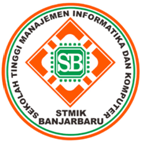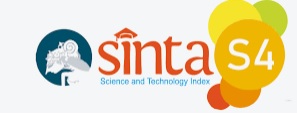Mobile Application Design for Smart Tourism with Augmented Reality Using User-Centered Design Method
Abstract
Abstract
Indonesia has many beautiful and attractive tourist destinations. However, limited information about these locations has made tourists less interested in exploring the cities. Traditional methods of providing information about tourist sites, such as print media, have proven to be less effective in providing information. To address this issue, it is necessary to utilize information technology. One way to do this is by designing a tourism app with Augmented Reality (AR) using the User-Centered Design (UCD) method. UCD is a method that involves the user in every step of the process. Users will be involved in every process, from the design of the application to the final product. Users will be given a questionnaire related to the design until it gets the required interface design. In this study, an average score of 4.16 was obtained, which show the application design can provide complete travel information of user needs.
Keywords: Tourism; Indonesia; User-Centered Design; Interface Design; Augmented Reality Application
Â
Abstrak
Indonesia mempunyai wisata yang indah dan menarik, namun karena terbatasnya informasi, wisatawan menjadi kurang tertarik untuk mengetahui apa saja yang ada di kota tersebut. Penyampaian informasi mengenai lokasi wisata dengan menggunakan media cetak, brosur dan spanduk di tempat wisata kurang efektif dalam memberikan informasi. Karena kemajuan teknologi sudah sangat pesat, maka diperlukan suatu cara untuk memanfaatkan teknologi informasi. Melalui perancangan aplikasi pariwisata dengan Augmented Reality (AR) menggunakan metode User-Centered Design (UCD). UCD adalah metode yang melibatkan pengguna dalam setiap langkah proses. Dari perancangan aplikasi yang dibuat, pengguna akan terus terlibat dalam setiap prosesnya. Pengguna akan diberikan kuisioner terkait perancangan, jika perancangan belum sempurna, proses UCD akan diulangi hingga mendapatkan desain antarmuka yang dibutuhkan sehingga dapat memenuhi kebutuhan informasi lokasi pengguna. Dari penelitian ini, didapatkanlah rata-rata skor 4.16 yang menunjukan rancangan aplikasi ini dapat dengan mudah digunakan oleh pengguna.
Kata Kunci: Pariwisata; Indonesia; User Centered Design; Augmented Reality Application
References
S. Brilliane, S. Novani and A. Farhana, "The Role of Value Co-Creation in ICT-based Service Innovation within Tourism Context," Journal of Indonesian Tourism and Development Studies, vol. 9, no. 1, pp. 10-16, January 2021.
K. P. d. E. K. /. B. P. d. E. Kreatif, "Statistik Kunjungan Wisatawan Mancanegara," Kementerian Pariwisata dan Ekonomi Kreatif / Badan Pariwisata dan Ekonomi Kreatif, December 2022. [Online]. Available: https://kemenparekraf.go.id/statistik-wisatawan-mancanegara/statistik-kunjungan-wisatawan-mancanegara-bulan-desember-2022.
A. Gvaramadze, "Digital Technologies and Social Media in Tourism," European Scientific Journal, vol. 18, no. 10, pp. 28-38, March 2022.
M. Rifa'i, T. Listyorini and A. Latubessy, "Penerapan Teknologi Augmented Reality Pada Aplikasi Katalog Rumah Berbasis Android," In Prosiding Seminar Nasional Teknologi Dan Informatika, Kudus, pp. 267-274, 2014.
N. H. Mat Zain, A. Jaafar and F. H. Abdul Razak, "A User-Centered Design: Methodological Tools To Design And Develop Computer Games For Motorimpaired Users," in Proceedings of the 5th International Conference on Computing and Informatics, Istanbul, Turkey, pp. 223-228, 11-13 August, 2015.
D. K. S. A. Y. Utku Kosea, “An Augmented Reality Based Mobile Software to Support Learning Experiences in Computer Science Courses,†Procedia Computer Science , vol. 25, p. 370 – 374, 2013.
A. L. KeÄkeÅ¡ dan I. TomiÄić, “Augmented Reality In Tourism – Research And Applications Overview,†Interdisciplinary Description of Complex Systems, vol. 15, no. 2, pp. 157-167, 2017.
D. Han and T. Jung, "Dublin AR: Implementing Augmented Reality (AR) in Tourism," in Information and Communication Technologies in Tourism, Wien, New York, Springer International, 2014.
Z. Yovcheva, User-Centred Design of Smartphone Augmented Reality in Urban Tourism Context, Bournemouth University, 2015.
L. Fitriani, D. Destiani and H. Muhtadillah, "A Tourism Introduction Application Using Augmented Reality," Jurnal Online Informatika, vol. 7, no. 1, June 2022.
M. Williams, K. K. K. Yao dan J. R. C. Nurse, “ToARist: An Augmented Reality Tourism App created through User-Centred Design,†Sunderland, UK, 2020.
Risald, Suyoto and A. J. Santoso, "Mobile Application Design Emergency Medical Call for the Deaf using UCD Method," International Journal of Interactive Mobile Technologies (iJIM), vol. 3, no. 12, pp. 168-177, 2018.
L. A. Wardana, Suyoto and Pranowo, "Design Mobile Application of Marriage Counseling on the Catholic Church with UCD and Wireframe Method," International Journal of u- and e- Service, Science and Technology, vol. 1, no. 10, pp. 153-162, 2017.
I. S. Y. Saputri, M. Fadhli and I. Surya, "Penerapan Metode UCD (User Centered Design) pada E-Commerce Putri Intan Shop Berbasis Web," Jurnal Teknologi dan Sistem Informasi, vol. 2, no. 3, pp. 269-278, 2017.
R. P. Harte, "A Human-Centered Design Methodology to Enhance the Usability, Human Factors, and User Experience of Connected Health Systems: A Three-Phase Methodology," JMIR Human Factors, vol. 4, no. 1, p. e5443, March 2017.
How To Cite This :
Refbacks
- There are currently no refbacks.










